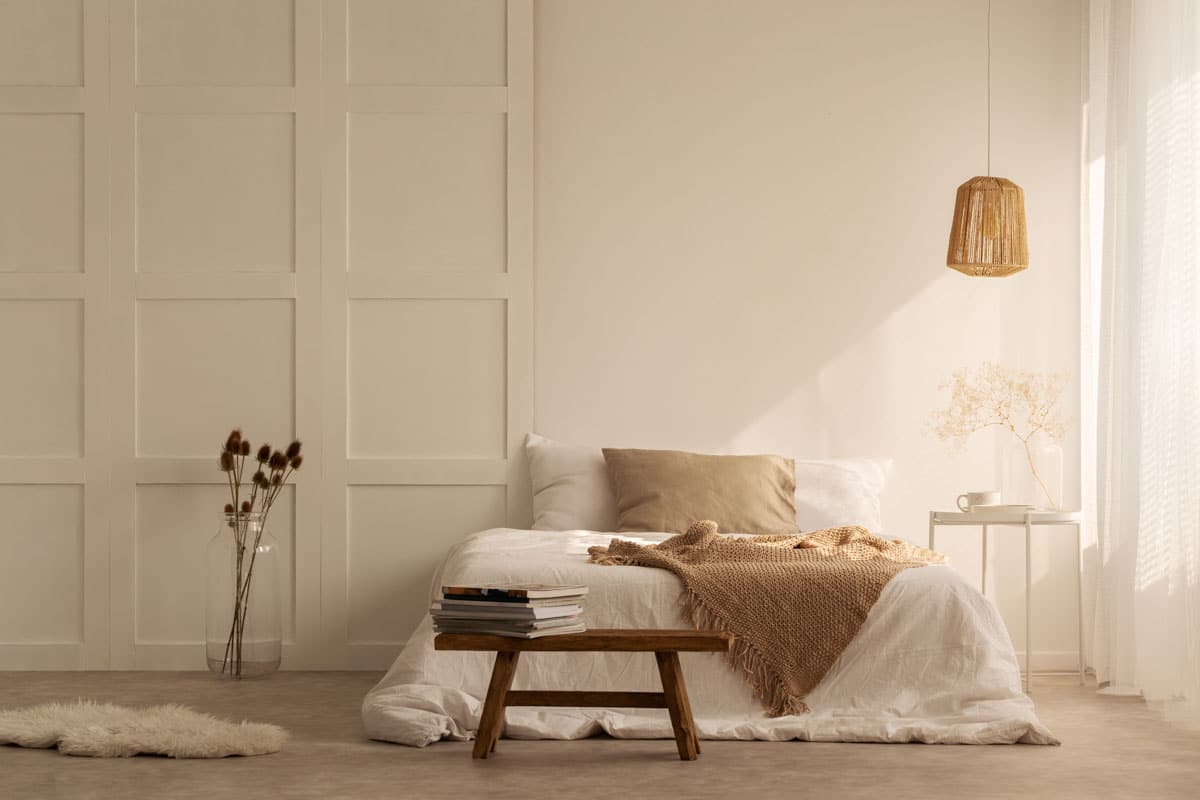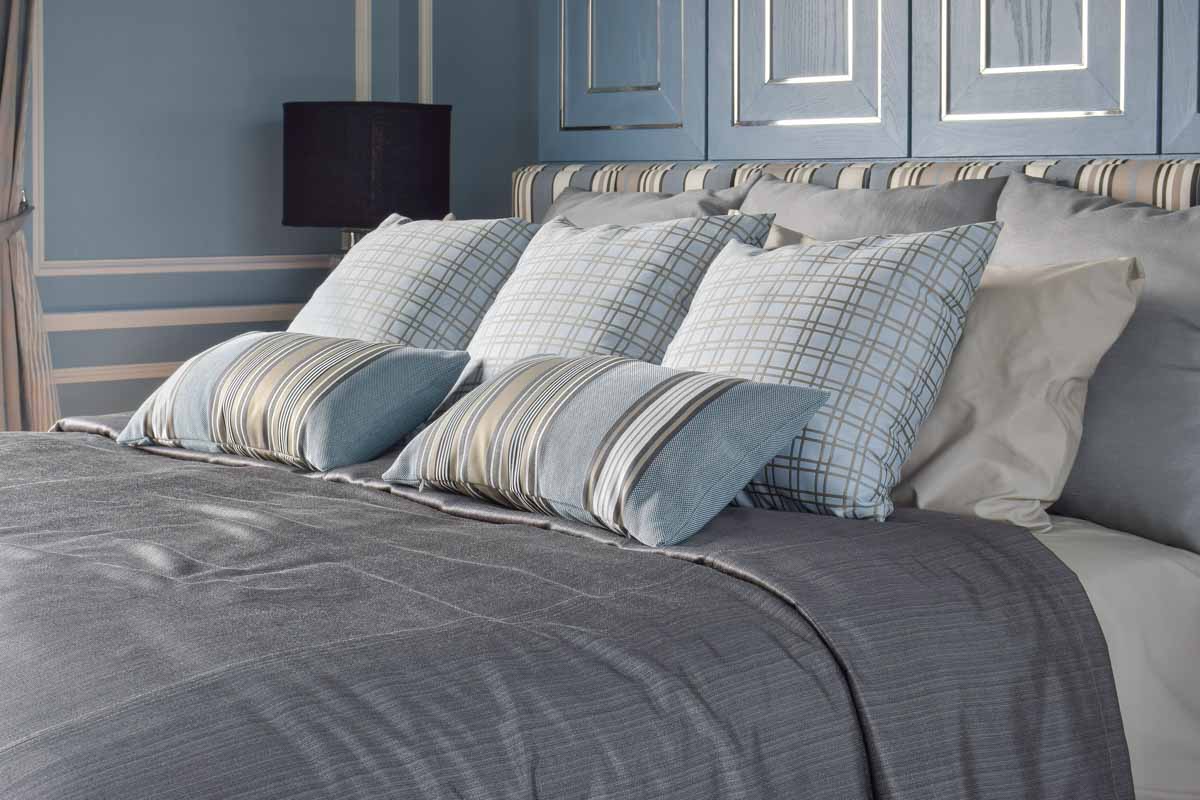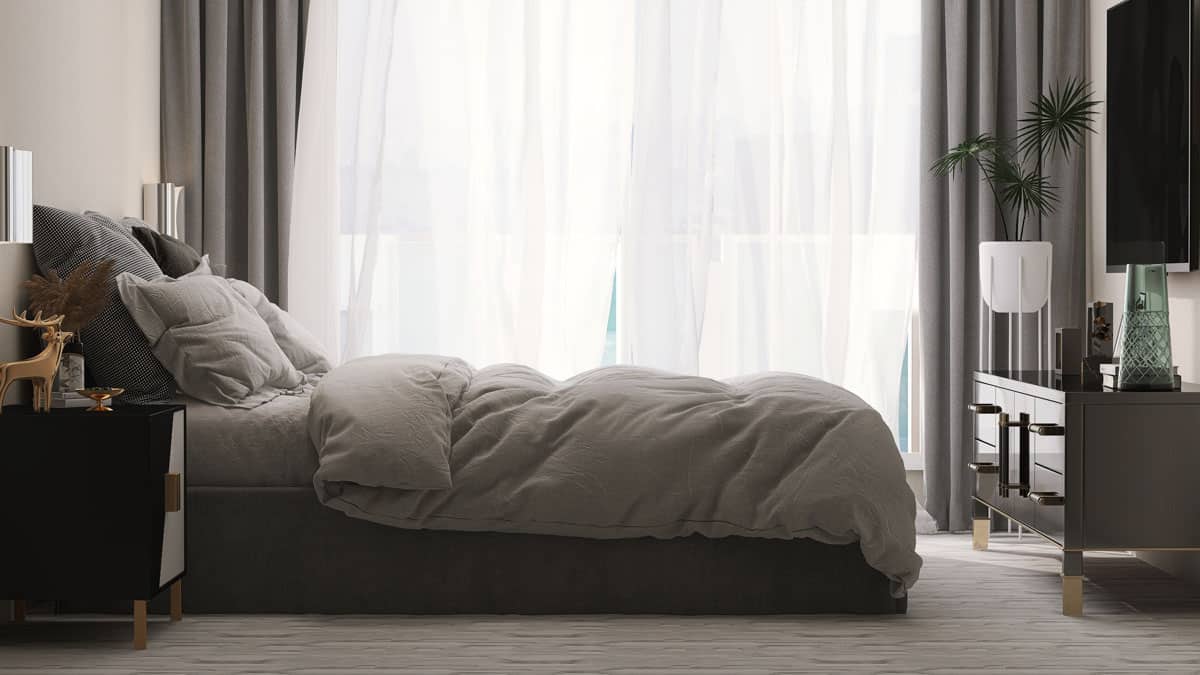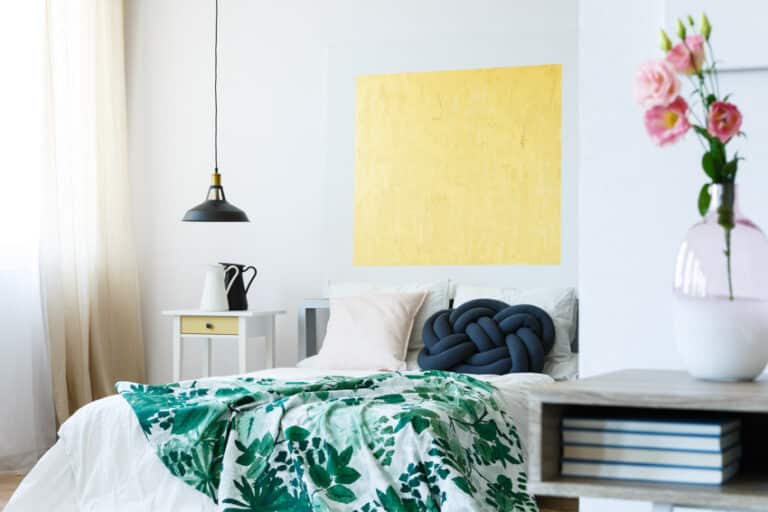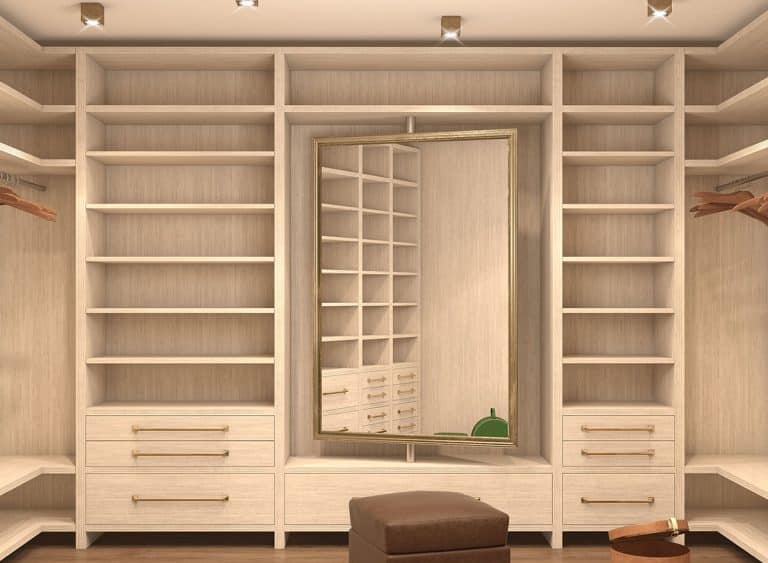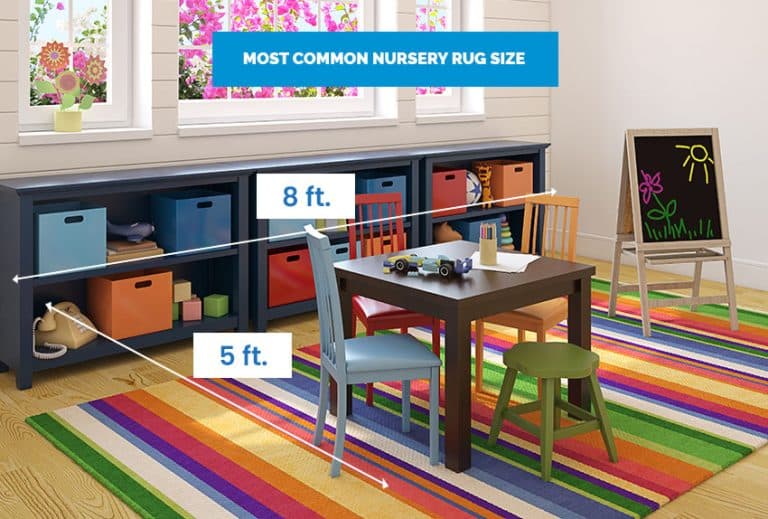9 Mistakes To Avoid When Buying Bed Sheets
Learn the mistakes to avoid when buying bed sheets including ignoring fabric options, getting them for the wrong reason, and choosing the wrong size.
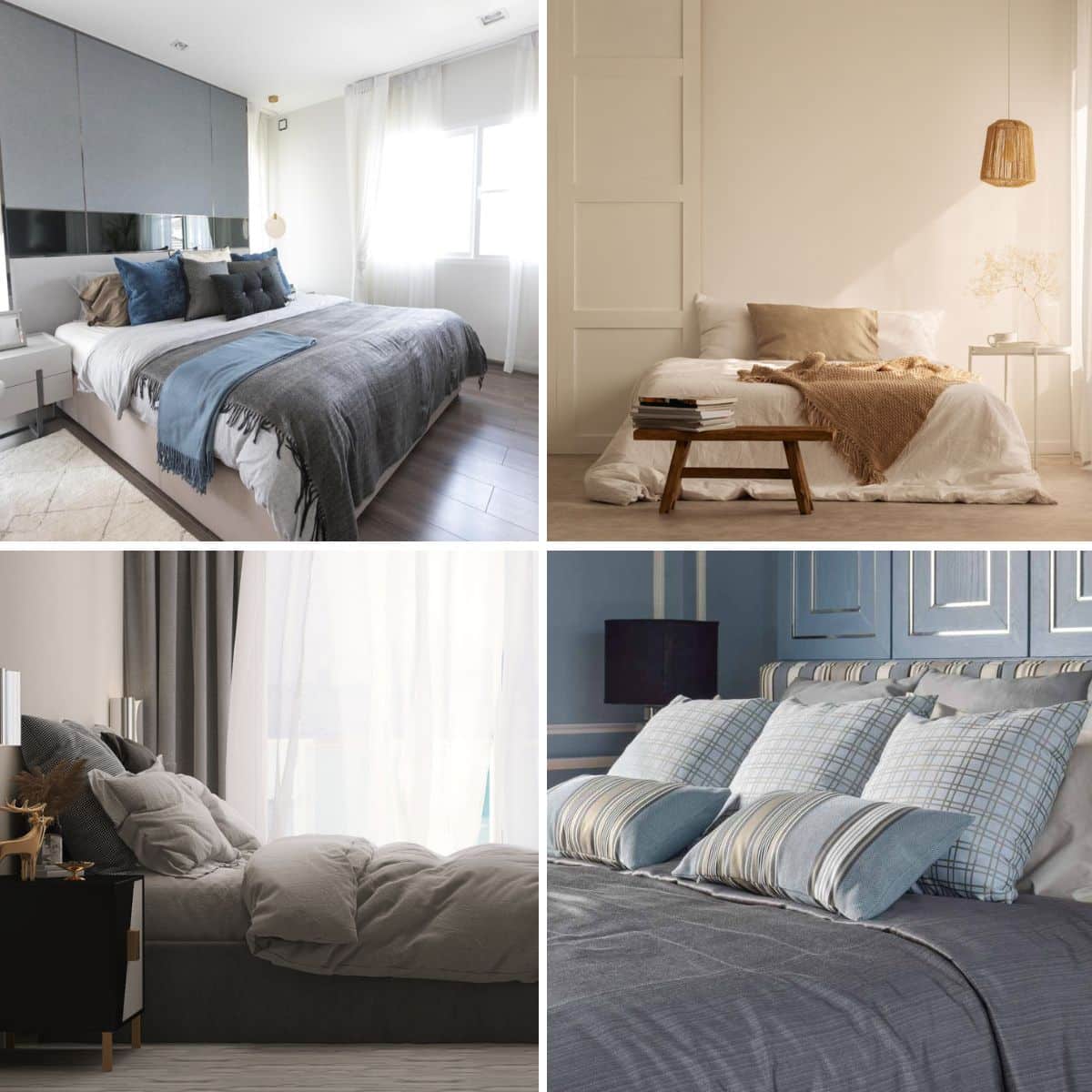
Many homeowners argue that the bedroom setup will always remain a top priority for interior design. As far as the bedroom setup is concerned, the kind of bed sheets you decide on play a pivotal role in your overall sleeping experience.
The right choice of sheets easily translates to restfulness and proper sleep. On the other hand, the wrong choice of sheets could end up with uncomfortable and sleepless nights.
As a consumer, knowing what you’re getting into is essential. But knowing what you should avoid when shopping for bed sheets is far more critical than that. Whether you’re new to this or already a highly seasoned and experienced buyer doesn’t matter.
The rules of what makes an excellent and high-quality bed sheet are simple and finite. It is precisely what we’re exploring as we explore what other things you should consider to avoid when buying bed sheets apart from just the thread count. [toc]
Quicklook: What to Avoid When Buying Sheets
- Choosing Uncomfortable Fabric Types
- Getting Sheets for the Wrong Season
- Not Knowing What Type of Sleeper You Are
- Buying the Wrong Thread Count
- Getting the Wrong Sheet Size
- Not Getting the Full Set
- Buying Material that Fades
- Overlooking hypoallergenic options
- Not Following Washing Instructions
Ignoring Fabric Types
One common mistake people commit is ignoring the fabric types for the bed sheets they buy. It is a huge mistake for several reasons. It can result in a much shorter lifespan for your bed sheets. It can be uncomfortable to lie down on. And, of course, it can cause a lousy sleeping experience overall.
The wrong fabric types for bed sheets can also cause an issue regarding temperature regulation. For example, the first thing to consider is what type of climate you have. If you are residing in a location that has a warm climate, linen, and cotton are the most suitable choices because of their lightweight nature and breathability.
In the colder months, though, it would be best to go with something slightly thicker and has more heat retention, such as flannel. Pay attention to the type of fabric you buy. It can save you from sleepless nights due to either feeling too cold or too hot when you’re in bed.
Research the different available fabric types and understand their pros and cons. Also, think about what your personal preferences are. What type of softness, texture, and crispness do you want? Are there any materials you like?
Also, make it a point to pay attention to the product labels and review the descriptions. Don’t buy purely on sight or online. A tactile experience is critical to making the right choice.
Getting Sheets For The Wrong Season
As we’ve mentioned, always consider your local climate as much as possible. Hotter climates require more breathable and lighter materials, such as cotton and linen sheets, whereas colder climates require heavier materials that retain more heat, such as flannel.
Another thing to look at as well is the thread count. You don’t have to be overly technical when thinking about thread counts. The best approach to this is to keep the ranges in mind.
If you live in hotter climates, 100 to 300-thread-count bed sheets should work best because of their breathability. On the other hand, higher thread counts ranging from 400 and up should work better if you live in colder climates.
Colors matter as well. Darker colors absorb and retain heat well, whereas lighter colors deflect them. Hence, opting for darker-colored sheets during the cold winter and lighter, summery colors during the hot months makes sense.
Not Considering What Type Of Sleeper You Are
It’s also important to consider what type of sleeper you are when shopping for bed sheets. For example, if you often sleep in your stomach, consider wearing sheets with softer and more breathable textures.
If you often sleep on your back, you might opt for something with a crisper texture and still soft to the touch. Percale cotton is one of the top choices for you.
If you are a side sleeper, it is best to consider sheets that give you some extra cushion and support while offering you something cozy and soft. Consider cotton sateen or something similar.
You also ought to consider whether you’re a cold or hot sleeper. If you often feel hot at night, use breathable materials for your bed sheets to keep your night sweats at bay and prevent your body temperature from increasing too much.
On the other hand, if you feel cold at night, go for bed sheet materials that can provide extra warmth and comfort and trap heat more effectively.
Getting The Wrong Thread Count
Another typical mistake buyers make is getting the thread count wrong on their bed sheets. What thread count means is the number of threads woven into your bed sheet per square inch. This count is a crucial indicator of the texture and bed sheets feel to the touch at the end of the day.
As for your actual sleeping experience, here’s how we’d break it down:
• Balanced or optimal thread count at 300 to 600 – This range offers the best balance and versatility regarding softness, texture, and breathability.
Bed sheets in this range also suit various climates and sleeping preferences. They are considered mid-range, so what this means is that they can offer great comfort throughout the year, regardless of the seasons. It also means they hit the sweet spot regarding durability, as they tend to last the longest compared to their high and low thread count counterparts.
• Low thread count at 300 and below – Because the weave for such bed sheets is so loose, it technically means that the texture is on the rougher side of the scale.
Although this might be something people with crisper preferences like better, this is something that can be deemed as generally uncomfortable for most people. Also, because there happens to be less structure in the weave, the material can be quite prone to getting a lot of wear and tear.
• High thread counts at 600 and above – Higher thread counts don’t always mean they make for the best bed sheet materials. Although they are often seen as the more luxurious choice because of how soft and smooth they are to the touch, they do come with certain downsides.
For starters, they aren’t very breathable because of how closely woven the fibers are with each other. It means they might not be best for hotter climates or hot sleepers.
They are also quite prone to thinning or piling over time because of how closely woven their fibers are. Hence, they also have a durability issue.
And, of course, there’s the problem of pricing. Higher thread counts bed sheets can be surprisingly expensive, so you often only see them in hotels and resorts. It can be a real bummer for people looking for cost-effective bed sheet solutions at home.
One of the most advantageous reasons to use a high thread count is to avoid piling. With a tighter woven thread, the material is less likely to pile and create those little balls of fuzz as the fibers break down.
Choosing The Wrong Size
Choosing the wrong bed sheet sizes might be counterintuitive, but interestingly, it is something that a lot of buyers get wrong all the time. It would help if you ensured that the bed sheets you buy will fit your mattresses snugly and comfortably at the end of the day.
If you get bed sheets that are too small, naturally, you’ll have issues getting them on the mattress and staying on. You may end up with instances wherein the sheets have been removed (because they don’t fit well), and you’ll experience the uncomfortable feeling of being directly in contact with your mattress while asleep. It leads to a lot of tension and stretching, ultimately shortening the lifespan of your sheets.
On the other hand, oversized sheets could lead to having a sleeping surface that’s bunched up and wrinkled in some areas. It can be uncomfortable to sleep on, but it also has the downside of looking unkempt and untidy.
Excess sheet material hanging on the bed’s sides may also cause you to trip. It can be harmful to instances wherein you’re about to sleep or just woke up when you don’t fully grasp your faculties yet, and you might still be groggy.
Ignoring Set Components
Ignoring what the bed sheet components are is a common offense for bed sheet buyers in general. It leads to users missing out on the full functionality of what bedding should be or what they’re all about in the first place.
Typically, bed sheets should have multiple components apart from just the sheet alone. Knowing what the other components are, what they function as, and how they can all contribute to a comfortable and restful sleeping experience is something every bed sheet buyer should consider.
The typical components are as follows: the fitted sheet, the flat sheet, the duvet cover, and the matching pillowcases. The fitted sheet has elasticized corners that hold them in place right beneath the mattress. Refrain from using this to mean that your sheets might be displaced at night, disrupting your sleep altogether.
Then there’s the flat sheet, which is meant to be placed right on top of the fitted sheet and should come between you and your duvet cover. It is excellent for that extra layer of added warmth and can help keep your fitted sheet or bedding looking tidier for longer.
Of course, your duvet cover is there as an extra layer of protection for your comforter, so that you don’t have to keep washing all those heavy beddings all the time because you have the covers that you can easily take on and off and throw in the washer periodically.
Overlooking Color Fastness
Colorfastness refers to a fabric’s ability to hold onto its color without the risk of bleeding or fading when exposed to the elements, such as getting washed, sunlight, or coming in contact with other fabric materials. Neglecting this could bring you a slew of otherwise avoidable problems.
For starters, if you have vibrant-colored bed sheets, ignoring their color fastness means that they might lose that vibrance over time. You will eventually end up with dull-looking bed sheets that don’t look crisp and fresh. It is commonly caused by exposure to direct sunlight, frequently being washed, or the use of harsh detergents.
They also risk bleeding into other fabrics and materials they’re in the washer with, so apart from the colors looking dull, they could ruin other clothing or fabrics if you don’t keep them in mind the entire time.
Not Considering Allergies
For people prone to allergies, it can be a huge mistake not to consider those allergies when shopping around for bed sheets. It can lead to some severe health issues if not taken into account.
There are a lot of allergens as far as bed sheets are concerned: pollen, dust mites, pet fur, and many more things to consider. It can be made worse by the wrong bed sheet material, too.
Allergens can accumulate in the fabric; some are more prone to harboring allergens than others. As they accumulate, so will your allergic reactions while you’re in bed. Goosedown pillows and comforters can be particularly prone to these allergens.
It would be best if you also thought about what your typical allergic reactions are. Are you prone to getting a runny nose? Sneezing? Skin rashes? Congestion? These little nuances can disrupt your sleep and affect your overall sleep quality.
When picking out your bed sheet choices, if you are particularly sensitive or allergic, an extra precaution would be to go for something hypoallergenic. It might put a little extra on the price tag, but the benefits well worth outweigh the costs at the end of the day.
You can also help mitigate these allergens’ buildup by washing your sheets frequently. Rigorous maintenance is recommended for you to keep your allergies at bay.
Not Reading the Care Instructions
Missing out on reading the care instructions on your bedsheets can result in many issues. For example, it can lead to a lot of wear and tear that could’ve been easily avoided by reading the care instructions at the end of the day.
For starters, there’s fabric deterioration to think about. Getting your bed sheets washed and thrown in the drier the wrong way, using the wrong harsh detergents, or having the wrong settings in the washing machine could lead to fabric deterioration or damage. It can cause fraying, piling, or fading in the wrong places.
There is also the possibility of shrinkage. Being ill-informed about a bed sheet’s specific care instructions can lead to your fitted sheets shrinking, eventually not fitting your duvet covers or mattresses as well as they used to. It is commonly caused by washing your sheets in hot water and drying them in high heat.
Bedding Materials To Avoid
When looking for the perfect bed sheets for you and your household, you should know the specific bedding materials you should avoid. While there may be specific materials you should avoid based on your preferences, allergies, and the like, here are some general materials to avoid all across the board.
Polyester sheets: This material is low budget for a reason. It isn’t that breathable. It traps heat way too quickly. It wrinkles easily. Hence, overall, it can lead to many uncomfortable sleeping hours. The appeal of polyester sheets comes from the fact that they come cheap.
You can get a better alternative through more natural weaves such as linen or satin sheets. They’re breathable, comfortable, and also affordable. Synthetic weaves may be more susceptible to piling, which causes the material to look unattractive.
Sheets with overly high thread count: It’s incorrect to think that the higher the thread count is, the higher the quality and comfort are. That isn’t technically correct.
Bed sheets with a thread count of 800 or above could be stifling and affect the material’s breathability. They can also be unreasonably more expensive without the added positives.
If you want to go for something that has a soft and luxurious feel to the sheets but still sits on the reasonable range of the price tag, you can opt for bed sheets that run on the 300 to 600 thread count feel.
To avoid bed sheet piling, use a thread count in the 600 to 650 range. Percale sheets are often purchased by those who detest piling problems.
Silk: This material feels rich and luxurious, but one major downside is that it can be particularly challenging to maintain at the end of the day. Silk sheets require extra delicate care and maintenance. It means they are more durable than other bed sheet materials.
If you like the luxurious feel but don’t want the high price tag nor the punishing maintenance that comes with it, you can go with its more sensible satin weave alternatives. A microfiber option is also another reasonable alternative.
How Often Should You Buy New Bed Sheets
Most sleep experts agree that bed sheets should be replaced every 2 to 3 years, especially if they show visible signs of wear and tear.
How often you should replace your bed sheets depends on various factors. You need to consider the quality of your sheets, your personal preferences, and how frequently and well you take care of them.
So, technically speaking, there isn’t one good answer to this question as it depends on many variables. With the proper care and maintenance of your bedding fabrics, you can rest assured that your sheets should last you a few good years.
High-quality sheets are far more durable and, with the proper care, could last you up to 5 years. The range isn’t as high for low-quality sheets, as they tend to wear out much faster and may need replacing every 2 to 3 years.
How To Choose Good Quality Bed Sheets?
There are a lot of critical factors that equate to what counts as good quality bed sheets. Knowing what they are is essential to getting the quality of rest and sleep you deserve after a long and hard day at work.
Always start with the kind of material you’re getting. Cotton is popular because it marries comfort with durability and breathability. Silk is excellent for regulating temperature and feels luxurious on the skin, but it also means that the maintenance required can be high, and you must be ready for it.
Bamboo, the versatile, rapidly renewable grass, appears in several bedding collections. Extremely soft with a sheen similar to silk or cashmere, bamboo fiber is both breathable and thermal-regulating. – The Lazy Environmentalist Your Guide to Easy, Stylish, Green Living, Josh Dorfman
Bamboo sheets feel soft and silky to the touch, but they also offer added features of being eco-friendly, hypoallergenic, and moisture-wicking features as well. And, of course, there’s linen, which is just as soft and breathable as cotton, with the added advantage of becoming softer and softer with each wash cycle.
It would help if you also looked at the thread count of the bed sheets you’re buying. Again, it’s wise to remember that higher doesn’t always mean better. A good range of high-quality bed sheets stands anywhere from 300 to 600. It will get you bedding that is soft enough to the touch and durable enough to last you for years and years to come.
Another less-known feature often missed is the ply feature of the bed sheets you’re buying. Although multi-ply sheets sound more luxurious and offer a much higher thread count, the effect this can have on the overall experience is a much coarser touch and way less durability and life spans. A single-ply sheet is as simple as it comes, but it produces a much more durable material and something so much softer to the touch at the end of the day.
Looking at the weave takes a little extra attention for the more advanced buyer but will give back in dividends. For example, percale sheets feel crisp to the touch. They also have a matte finish and are highly valued for their breathability and lifespan.
Jersey sheets offer a unique weave that makes the bed material comfortable and stretchy. They are the best materials to opt for if you want to go for a relaxed and casual material. They also feel soft to the touch.
Another type of weave to consider buying is sateen. Sateen materials feel smooth and silky and have a feeling of luxury and a feeling of premium. One thing to note is that they may have a downside regarding breathability.
To sum it all up, picking out bed sheets that are of top quality would involve a lot of thinking and consideration on things such as the type of weave, how much thread count there is, what type of fabric it has, whether it’s the right size for the mattress or not, whether it’s hypoallergenic or not, and so much more.
The key is to take it all in and take your time while you’re considering it. Could you not rush through it? Go with a tactile feel for the material, and don’t rush into buying stuff online. Ask for actual fabric samples if you have to.
Remember that choosing the perfect bed sheets is essential to create that perfect sanctuary of sleep and restfulness in your bedroom at home. It seems mundane, but knowing what these common mistakes are could end up with you making all of the difference in the world for your sleeping experience.
Investing in the proper high-quality sheets is worth making in exchange for high-quality sleep. That’s one of the things that you just can’t put a price tag on at the end of the day.
See more related content in our article about the best bed alternatives for smaller spaces on this page.

